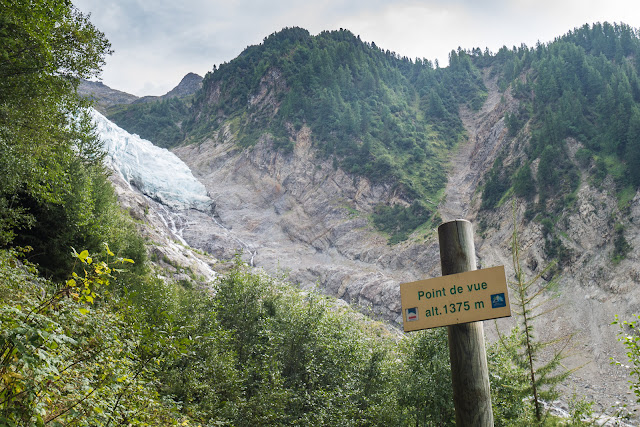My most frightening photograph
If you follow my work on Instagram, you will know about my love of walking in the hills. Last September, in Chamonix-Mont Blanc, in the French Alps, I photographed my most frightening image. This is it below.
So what exactly is so frightening about this photograph? It is just a simple image of the tail of the Bossons glacier, photographed on the lower slopes of Mont Blanc, almost at an altitude one mile up in the air.
Well, this is the view of the Bossons glacier photographed from the same spot, on my first visit in 1987.
When you compare the two photos side by side, then perhaps you will realise why I was in such a state of shock. The Bossons glacier has all but vanished from the lower slopes.
This is no small block of Ice. It is about 7.5 km long, with a surface area of approximately 10 km². When I was here in 1987 and I looked down on the glacier, I watched climbers trying to get across it.
In 2017, when I looked down, all I could see was bare rock and I needed my telephoto zoom lens to get close enough to the glacier, to photograph the tail and meltwater.
It is just as dramatic when comparing the view from across the valley. You can see the Bossons glacier falling below Mont Blanc like a long tongue when photographed in 1987 and it looks much less impressive in 2017. There really is a big difference.
Les Bossons is one of Europes lowest lying glaciers and also the fastest moving. It falls down the slopes of Mont Blanc, replenishing itself at a rate of almost 300m per year. However, it has retreated just under 1 km in length in the last 30 years. You can see that in 1987, the tail came almost level with the entrance to the Mont Blanc tunnel (bottom centre of pics) and the lower area of the glacier in 2017, was much thinner, exposing much more rock.
 |
Summer avalanche, Chamonix-Mont Blanc 2017 - The top of the Bossons glacier is on the right.
|
While glaciers have been in slow retreat for a couple of centuries, this rate of retreat has accelerated dramatically over the last 20 years. And it is happening on more than 90% of the monitored glaciers in the world. For the latest figures see the World Glacier Monitoring Service (WGMS) website.
The climate is changing on a global level, but when you see something like the dramatic disappearance of the Bossons glacier up close and watch summer avalanches from the melting ice, it really makes an impact. Melting glaciers are like the canaries in the coal mines and perhaps we need to start paying attention to this warning - soon!
Les Bossons Glacier on Google Maps









Comments